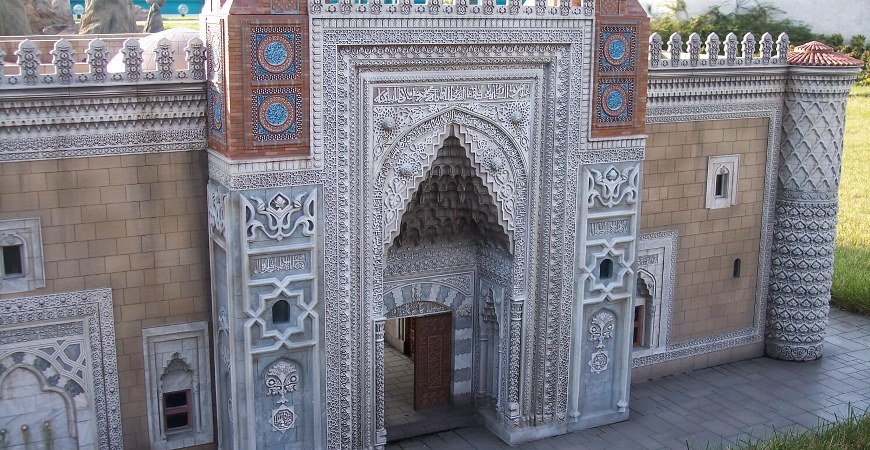Sivas September 4 Ataturk Museum and Sivas Museum of Antiquities,
Sivas Museum of Antiquities
Sivas Museum of Antiquities was opened in 1934 in the Gok Medrese Which was built in the Seljuk period. In 1967 when repairs to the Buruciye Medrese have completed the works were moved here and put on exhibit. Buruciye Medrese was built in the time of the Seljuk Sultan Giyaseddin Keyhusrev I’ll by Muzaffer Barucirdi in 1271. The Medrese is in typical Seljuk style with an open courtyard and four exedras. The stone carved portal leads into a domed exedra opposite which is the main pointed barrel-vaulted exedra. To the right and left are the two secondary exedras. On two sides of the courtyard are five arched colonnades each resting on four marble columns. Leading off these colonnades are vaulted domed rooms which were originally those of the students. To the left of the entrance, exedra is the Tomb of Muzaffer Barucirdi who built the Medrese. The rooms and exedra of the Medrese contain archaeological and ethnographic works from the region of Sivas. The first room contains examples of the famous silverware of Sivas, including silver belts, bracelets, and ornaments, copper objects from the Seljuk and Ottoman periods, and objects from tekkes. There are also flintlock pistols, cigarette holders from Sivas, embroidered purses, coffee services etc.
The second room contains stone and ceramic archaeological finds, glass objects, pieces of porcelain etc. The third contains ethnographic works, including socks, clothing, embroidered jackets, shawls are woven in Sivas’s sub-province of Gurun, bed spreads and harnesses. The other cases in this room contain flintlock pistols, armor, bows and arrows, shields, maces etc. In the main and side, exedras are exhibited sarcophagi, water jars, gravestones and other works from the Roman, Byzantine, Seljuk and Ottoman periods.
Sivas September 4 Ataturk Museum
After the Erzurum Congress Ataturk came to Sivas on September 2, 1919, and stayed in Sivas Sultani (High School). On September 4, 1919, the seven days Sivas Congress began in the Sultani hall. The hall in which the Sivas Congress was held and the room where Ataturk studied and slept during the Congress have been preserved in their original state and turned into the September 4 Ataturk Museum.
At the time of the Sivas Congress, the two rooms to the left of the entrance on Tasli Street were used for security officials, the two large rooms on this side as dining rooms and the other rooms as pantry etc. On the upper floor is the congress hall, beside which is Ataturk’s bedroom, and another room which was used as a telegraph office. The other rooms leading off the hall were those allocated to Ataturk’s colleagues.
The Congress Hall contains the desk at which Ataturk sat during the Congress, his armchair and writing set, a platform, the 22 benches marked with plaques and photographs indicating where each member of the Congress sat, carpets and prayer carpets presented by the people of Sivas at the time of the ‘Congress, three armchairs and a sofa, the telephone used at the Congress, a large photograph of all its members along with their names, comments written by Ataturk when he returned to visit the congress building afterwards, and documents concerning the Congress etc. Ataturk’s bedroom contains a bed, dinner services, furniture, documents and pictures of the Congress and desks.



































































































































